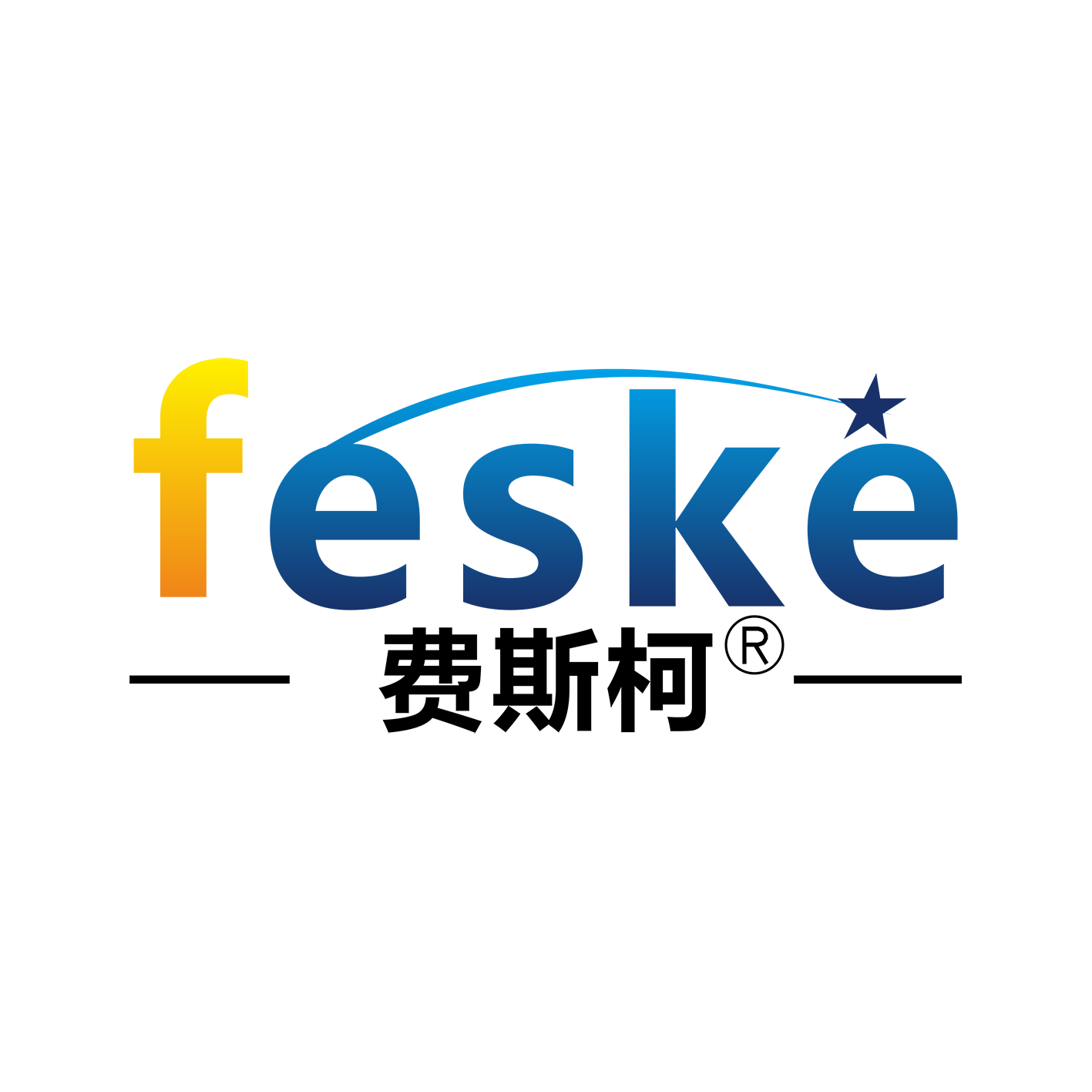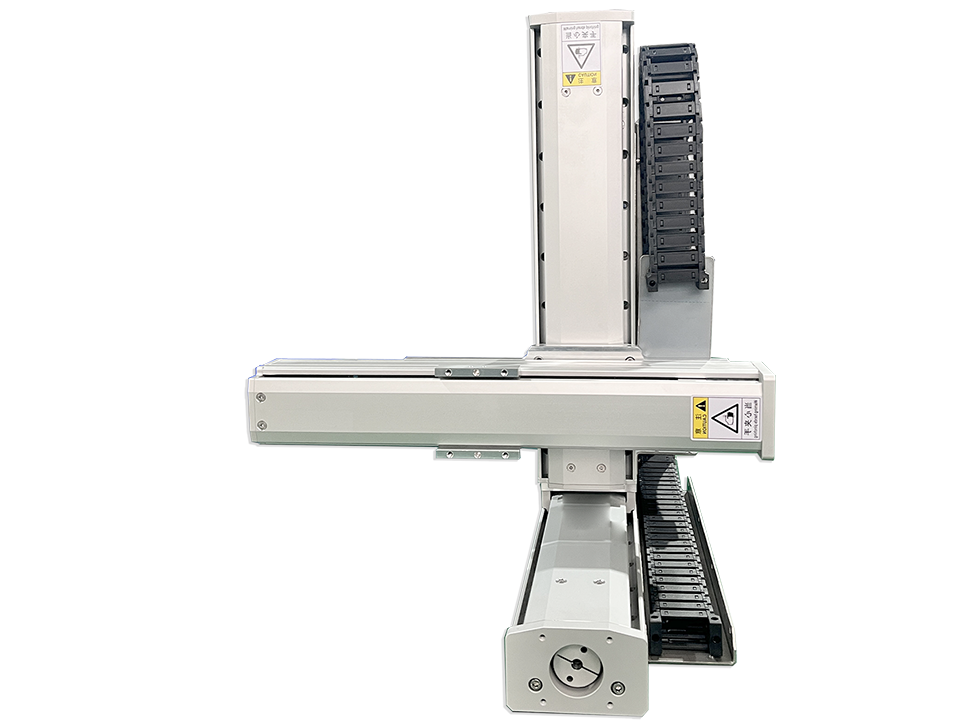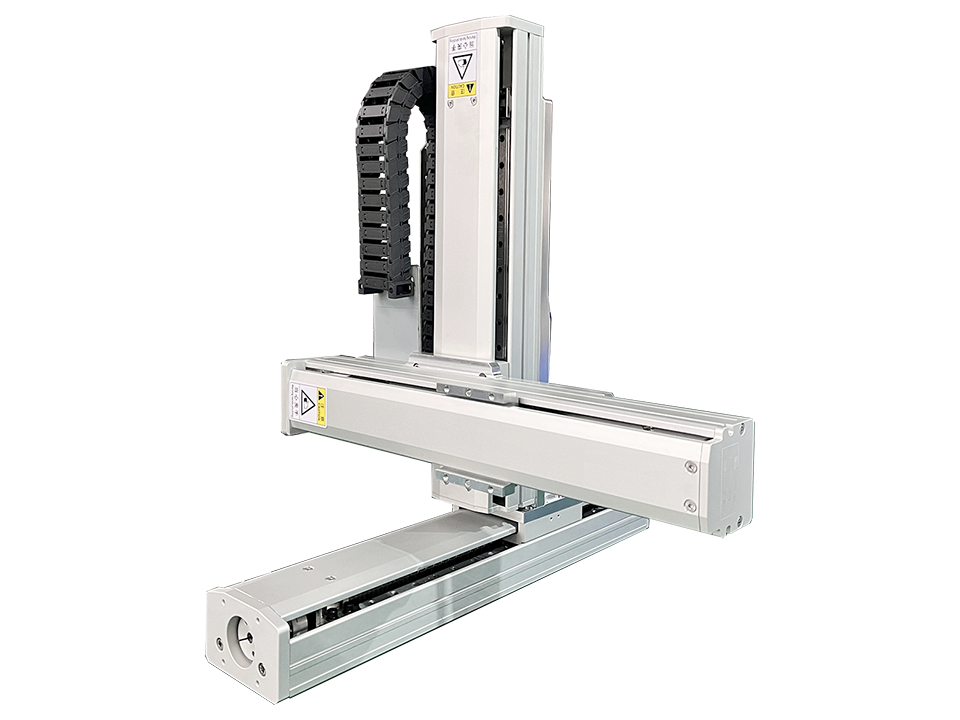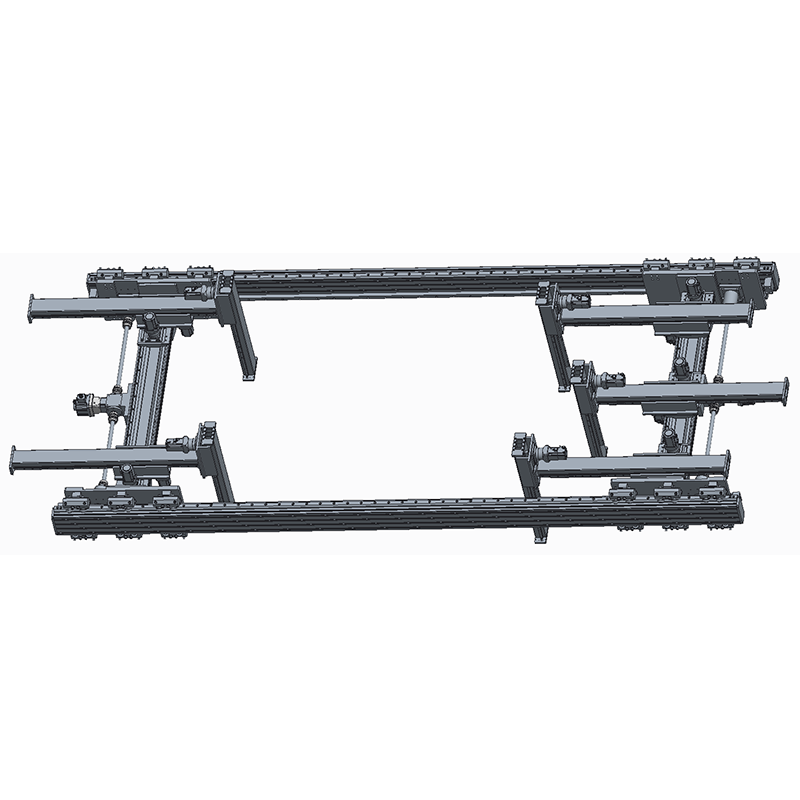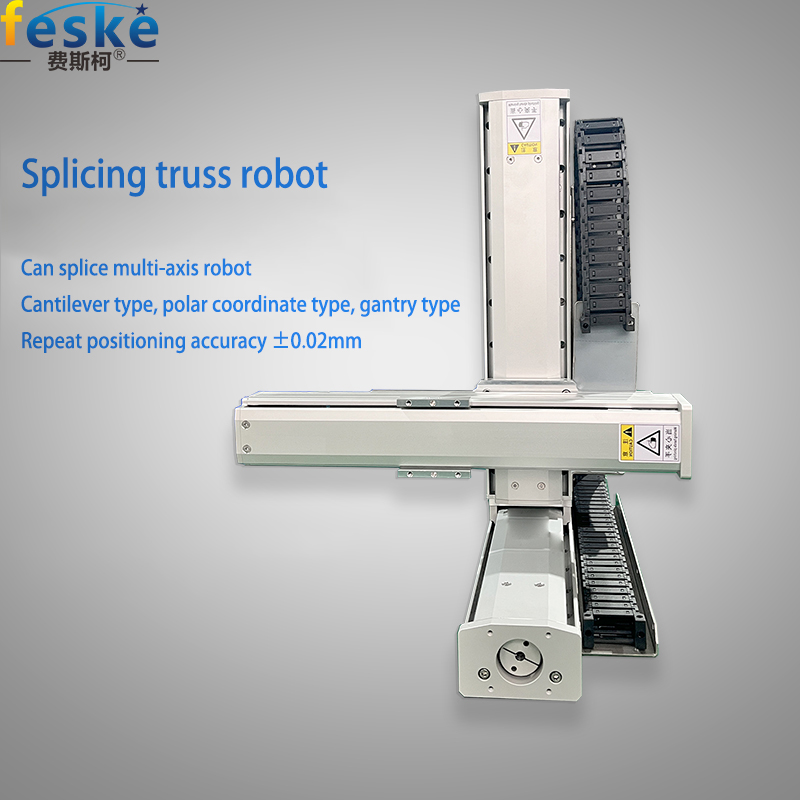Polar coordinate type-2 axis P-Type
Z axis upright fixed type
Features: The type in which the Z axis (vertical axis) is installed upright on the X axis.
Use environment: It can be used in occasions such as inserting workpieces into shelves or lifting trays.
Notes: 1. The 2 axis is equipped with brakes as standard 2. The maximum stroke of the 2 axis is 500mm
Polar coordinate type-3 axis P-Type
Z axis upright fixed + Y axis slider fixed
Features: The slider of the Y axis is fixed on the Z axis slider mounting part, and the Z axis is upright fixed on the X axis
Use environment: Suitable for occasions such as inserting and moving workpieces into containers, or positioning and transporting them to walls
Notes: 1. The 2 axis is equipped with brakes as standard 2. The maximum stroke of the Z axis is 500mm
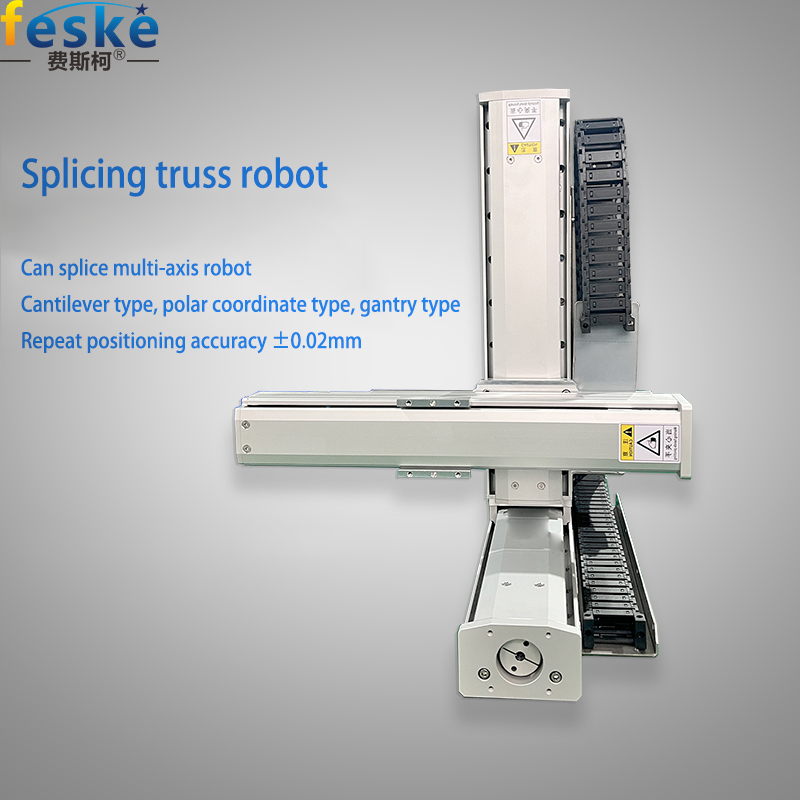
The following is a comprehensive technical introduction of the Programmable Multi-module Orthogonal
Automated Robot Arm FSKP (based on modular design and integration of automated collaborative
features):
🧩 I. Core architecture and design features
Multi-module orthogonal coupling system
Adopting a distributed multi-CPU control architecture, each joint module is orthogonally spliced through
standardized mechanical/electrical interfaces, supporting reconfigurable expansion from 6 degrees of
freedom to N degrees of freedom (such as dual-arm collaboration or humanoid robot form)
The module has a built-in TI DSP processor to achieve local intelligent decision-making, and the bus
negotiation mechanism (CAN bus/Ethernet) ensures the real-time performance of multi-agent collabora
tive operations
Orthogonal motion optimization
The joint axes are distributed in a rectangular coordinate system to reduce singular point interference,
improve spatial trajectory accuracy (repeat positioning accuracy ±0.1mm), and adapt to precision
assembly and multi-angle operations
The lightweight alloy frame is combined with an embedded shock-absorbing layer to suppress multi
-axis linkage resonance, and the continuous operation noise is ≤55dB
⚙️ II. Key performance parameters
Parameters Specifications
Maximum load Single arm ≤10kg / Collaborative mode ≤20kg
Working radius 0.8–1.5m (expandable)
Repeat positioning accuracy ±0.1mm (ISO 9283 standard)
Protection level IP40 (semi-sealed, upgradeable to IP54)
Programming compatibility ROS/CODESYS/PLCopen
Note: Load>10kg requires dynamic torque compensation algorithm to prevent overload offset
🤖 III. Technical advantages and application scenarios
Open programmable ecosystem
Supports Visual C++/Python secondary development, open kinematics library and sensor interface
protocol, adapt to academic research and industrial customization needs
Quickly switch end effectors (gripper/visual camera/welding gun) through module hot swap, and
complete task reconstruction within 10 minutes
Typical application areas
Scenario Function realization
Laboratory collaborative research Multi-robot collaborative path planning, AI algorithm verification
platform
Flexible electronic assembly PCB board precision plug-in, micro-component high-speed placement
Medical device assembly Instrument classification and sterile packaging in a sterile environment (IP54
protection optional)
Education and training platform Robot kinematics/multi-body control algorithm teaching carrier
🔧 Fourth, selection comparison and upgrade direction
Features FSKP (multi-module orthogonal arm) Traditional industrial robot arm
Reconstruction flexibility ★★★★★ ★★☆☆☆
Development friendliness Open SDK/multi-language support Closed system/dedicated script
Multi-machine collaboration cost Bus direct connection reduces wiring complexity Additional central
controller required
Accuracy adaptability ±0.1mm (light load scenario) ±0.02mm (heavy load high precision)
The platform provides highly flexible automation solutions for scientific research and light industrial
scenarios through orthogonal modular architecture and distributed intelligence, especially for prototype
development environments that require rapid iteration of tasks
The core advantages of the Programmable Multi-module Orthogonal Automated Robot Arm FSKP are
as follows:
"Modular orthogonal architecture design"
Supports multi-axis parallel expansion, enabling flexible configurations of 6 to 12 axes through standar
dized interfaces. The orthogonal layout ensures independent motion between modules, achieving rep
eatability of ±0.02mm. The modular design supports hot-swappable replacement, improving maintena
nce efficiency by 40%.
"Multimodal Intelligent Collaboration"
The built-in RoboBrain 2.0 spatiotemporal reasoning engine supports cross-body collaboration and
dynamic task planning, enabling simultaneous handling of complex tasks such as visual positioning and
force-controlled assembly. Compatible with Franka Robotics' force control algorithm, it boasts a sensit
ivity of up to 0.1N.
"Full-scenario adaptability"
It boasts a working radius of 0.5-3m, a payload range of 5-50kg, and an IP65 protection rating suitable
for both cleanroom and outdoor environments. A wide operating temperature range (-20°C to 80°C)
ensures stability in extreme operating conditions.
Development-Friendly
Supports one-click deployment with RoboOS 2.0, offers dual SDKs in Python and C++, and comes with
over 200 pre-installed standardized action templates in the Skill Store. Program complex trajectories
with just three lines of command.
Open Ecosystem Support
Utilizes the MCP protocol for multi-machine cluster control, supporting collaboration with heterogen
eous devices such as Franka Robotics and UR. Open-source interfaces eliminate vendor adaptation
barriers, shortening development cycles by 60%.
